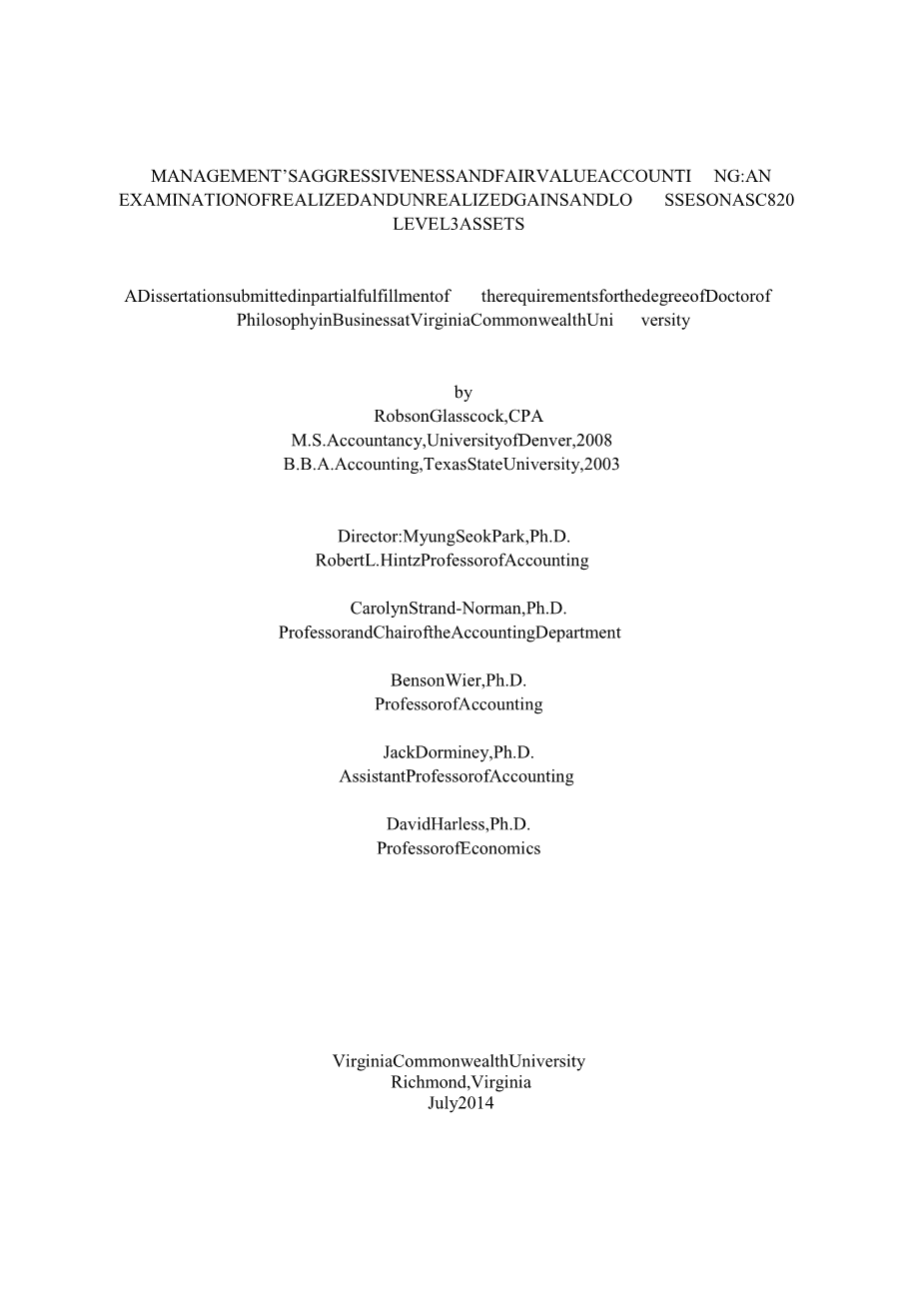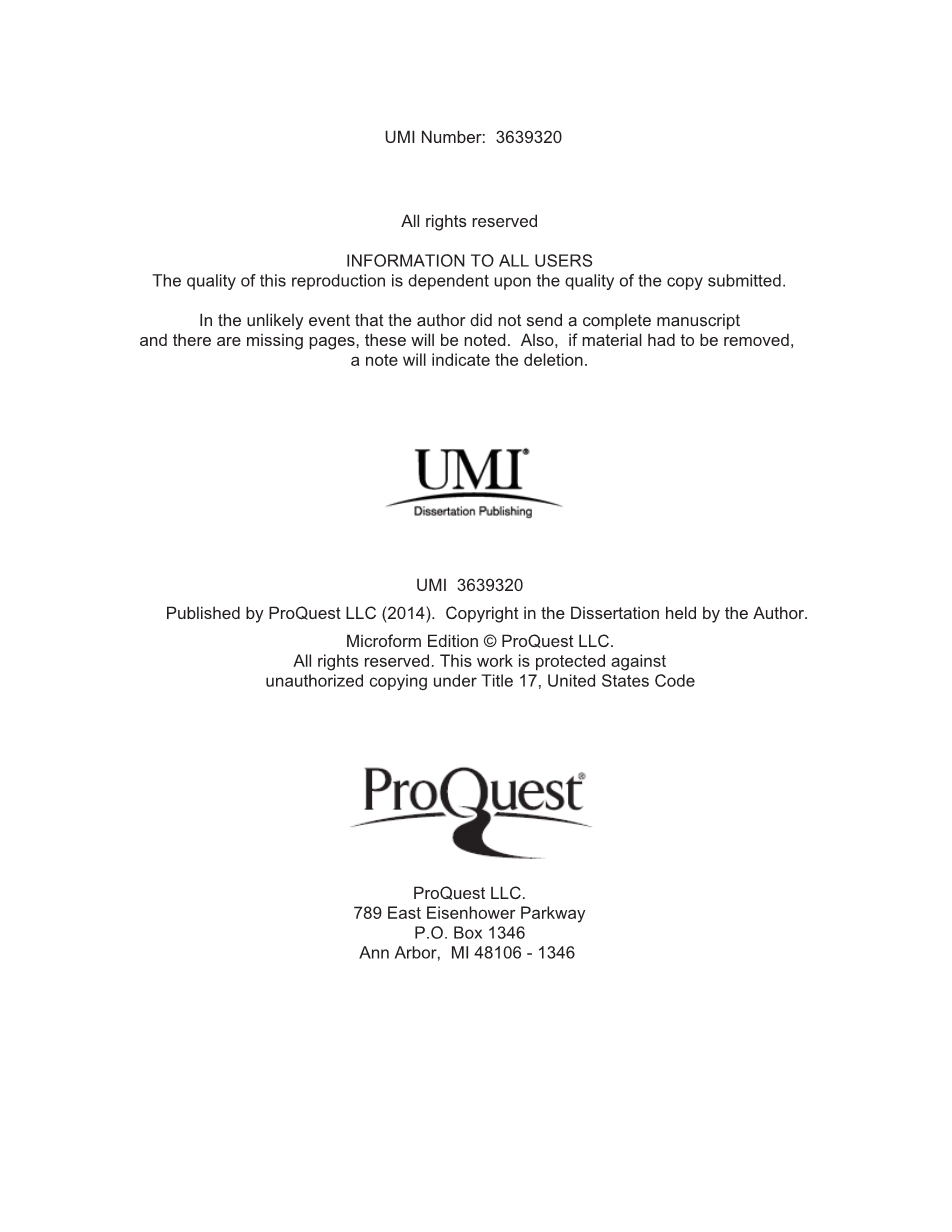

英语原文共 80 页
MANAGEMENTrsquo;S AGGRESSIVENESS AND FAIR VALUE ACCOUNTING: AN EXAMINATION OF REALIZED AND UNREALIZED GAINS AND LOSSES ON ASC 820 LEVEL 3 ASSETS
Robson Glasscock
Abstract
Prior research has shown that even the most subjective fair value estimates are value relevant (Song et al. 2010, Kolev 2009, Goh et al. 2009) and that managers appear to use Level 3 valuations opportunistically (Valencia 2011, Fiechter and Meyer 2009). However, the association between “traditional” measures of aggressiveness in financial reporting and biased
estimates of fair value has not been previously studied. I test whether aggressiveness, as
measured by discretionary accruals, real activities manipulation, and meeting-or-beating
analystsrsquo; consensus estimates, is positively associated with realized and unrealized gains and
losses on Level instruments. Overall, I find limited support that aggressive firms
opportunistically use fair value measurements to overstate earnings. Inferences remain the same
whether only the unrealized component of gains/losses are examined and whether firms are
classified into “suspect” or “non-suspect” groups.
Introduction
On May 12, 2011, the Financial Accounting Standards Board (FASB) issued a press release stating that the FASB and the International Accounting Standards Board (IASB) completed a significant milestone in the process of moving towards a single, global set of highquality financial accounting standards. Specifically, the boards issued common standards regarding techniques and disclosures related to fair value accounting. The promulgation of common standards is known as “convergence”, and the boards have been actively working to align US Generally Accepted Accounting Principles (GAAP) and International Financial Accounting Standards (IFRS) since 2002. Due to convergence, understanding the risk and benefits of reporting assets and liabilities at fair value literally has global implications. Leslie Seidman, Chairman of the FASB, said, “This Update represents another positive step toward the shared goal of globally converged accounting standards. Having a consistent meaning of the term lsquo;fair valuersquo; will improve the consistency of financial reporting around the world” (FASB 2011). Despite the world-wide importance of fair value accounting, relatively little empirical evidence exists regarding the current fair value standards. This sentiment is expressed by DeFond (2010), “Going forward, I think there are accounting developments on the horizon about which we know relatively little, and hence are logical prospects for future research. One example is fair value accounting, which represents a potentially sea-changing development in the accounting environment” (DeFond 2010, 11). Further, the additional disclosures required by modern fair value standards may be able to provide further insights into issues that have been debated in prior research. Barth and Taylor (2010) are critical of the conclusions made by Dechow, Myers, and Shakespeare (2010) regarding the manipulation of fair value estimates during asset securitizations stating that, “Recent changes in accounting standards might provide a greater opportunity to investigate the discretion in fair value estimates. For example, SFAS 157 defines fair value, provides guidance on how to determine it, and requires more extensive disclosures about fair value than required previously. Perhaps these new disclosures can be used to construct more direct tests” (Barth and Taylor 2010, 33).
Laux and Leuz (2009) discuss the major arguments for and against fair value accounting subsequent to the financial crisis. The authors frame the discussion within the tradeoff between relevance and reliability and state that accounting standards setters have debated this tradeoff for decades. Laux and Leuz (2009) write, “Few dispute that transparency is important. But the controversy rests on whether fair value accounting is indeed helpful in providing transparency and whether it leads to undesirable actions on the parts of banks and firms” (Laux and Leux 2009, 827-828). This study provides direct evidence regarding one such undesirable action (e.g., firms intentionally manipulating fair value estimates to manage earnings).
Prior to the passage of Statement of Financial Accounting Standards No. 157 (FAS 157), existing guidance related to fair value accounting remained dispersed through the precodification hierarchy of Generally Accepted Accounting Principles (GAAP) in the United States. The definitions of fair value varied across standards, and specific implementation guidance was limited. The FASB recognized that these problems “hellip; created inconsistencies that added to the complexity of applying U.S. GAAP” (FASB 2006, FAS 157-2). FAS 157 did not increase the scope of which account balances or classes of transactions were to be reported at fair value. Rather, FAS 157 was written to be a single authoritative implementation standard for other areas of US GAAP requiring fair value accounting.
The FASB implemented the Accounting Standards Codification (ASC) for financial reporting periods subsequent to September 15, 2009. The ASC technically supersedes all prior US GAAP, but many of the existing Statements of Financial Accounting Standards were incorporated into the Codification. For instance, the provisions of FAS 157 are incorporated into the Codification as Accounting Standards Codification 820. Hereafter, this paper references the Accounting Standards Codification rather than the Statement of Financial Accounting Standards (ASC 820 instead of FAS 157).
Inputs to the three valuation techniques permitted by ASC 820 (i.e., market approach, income approach, or cost approach) are eithe
资料编号:[4487]


